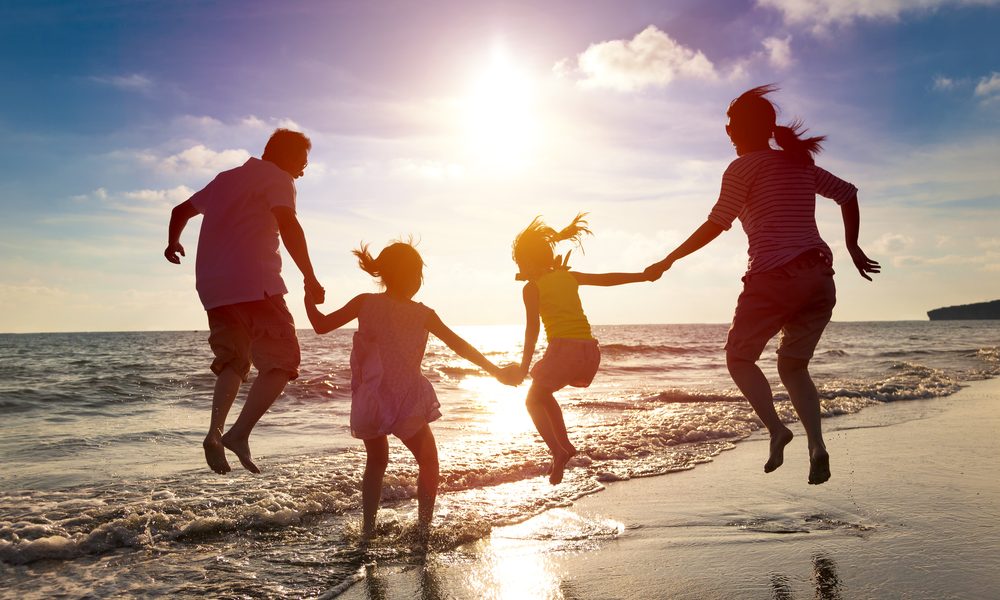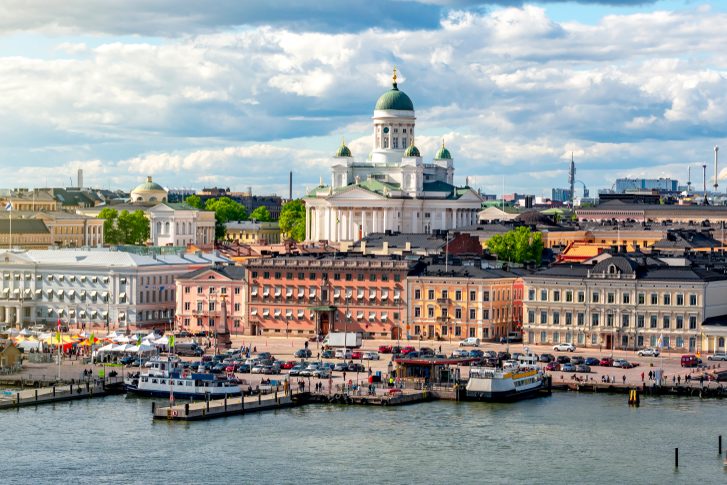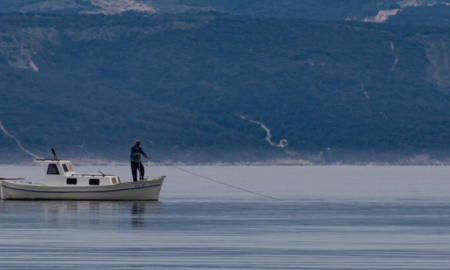
What are the Secrets of the World’s Happiest Countries?

Every time the United Nations releases its annual World Happiness Report, Nordic countries usually top the list. Happiness Experts from all over the world conduct an annual survey ranking 156 countries by how happy their citizens are in their lives.
Jeff Sachs, the co-founder of the World Happiness Report, told CNBC Make It that when talking about “happiness”, they refer to a person’s satisfaction with the way his or her life is going.
The World Happiness Report was established in 2012. Since then, Nordic countries—which consists of Norway, Denmark, Sweden, Iceland and Finland, as well as the Faroe Islands, Aland, and Greenland—usually land at the top of the list.
Finland ranked first for two consecutive years in 2018 and 2019. Norway was No. 1 in 2017, while Denmark topped the list in 2013 and 2016. Switzerland clinched the top rank in 2015.

Mistervlad/Shutterstock
Finland topped the list of happiest people in 2019.
The reason why Nordic nations rank high is due to the benefits that they have, such as free education and health care. These countries also have lower crime rates and have good social security nets at that.
Fundamentally, the people living in these nations prioritize balance, which Sachs describes to be the formula for happiness.
Here are 3 secrets on how Nordic nations balance their lives:
They work fewer hours
Denmark’s full-time workweek is generally 37 hours, distributed over five days. Moreover, according to the Bureau of Labor Statistics, the typical American workweek is 44 weekly or 8.8 hours daily.
In terms of their attitude toward longer hours of work, Danes are different compared to Americans. For many Americans, working late is a good way to make headway in your career, people in Denmark find it as a weakness, since it proves that you cannot finish your tasks in the allotted working hours, Kay Xander Mellish, author of “How to Work In Denmark,” told CNBC Make It. The Ministry of Foreign Affairs of Denmark said that most Danes leave work at around 4 p.m.

OLEH SLEPCHENKO/Shutterstock
Danes typically end their work day at 4pm.
In order to be efficient at work, Danes solely focus on getting things done quickly, which means they do not socialize at work or even take breaks to run errands.
They also exercise flexible working arrangements. In Finland, employees may even change their workday three hours earlier or later than the regular hours assigned by their employers.
They are guaranteed to have five weeks of paid vacation
In Denmark, regardless of a person’s position or nature of work, full-time employees have five weeks of vacation time guaranteed.
People from Denmark and Sweden make sure to take advantage of their time off to enjoy their vacation time. In Finland, a lot of them spend their summers in “mokki” or cottages, where they unwind and relax with their families and friends.

Maridav/Shutterstock
Employees in Denmark have at least 5 weeks of paid leave.
They can go on a “stress leave”
Mellish said that people go on “stress leave” when things at work become hectic, and the burnout affects their mental health.
In Denmark, there is a system that enables businesses to easily hire and fire employees called “flexicurity.” Generally, flexicurity is a welfare state model that enhances flexibility and security and guarantees active labor market policy. This system protects individuals rather than jobs as the government ensures to provide security to its people.
Under this model, employees pay an average of $62.54 monthly to an unemployment insurance fund. If they meet the requirements, they can get up to two years of their salary once they lose their jobs. In order to assist people to get back to work, the government even provides counseling and education.
In this case, Nordic countries put the spotlight on freedom. Having the freedom to find and have the job that they truly love doing elicit happiness.
More in Mind & Mental
-
`
Here’s Everything You Need to Know About Open Relationships
An open relationship is a consensual arrangement where partners agree to engage in romantic or sexual relationships with other people. Unlike...
June 6, 2024 -
`
Explore the Multifaceted Goals of Meditation
What is the goal of meditation? If you have ever found yourself asking this question, you are not alone. Meditation has...
May 31, 2024 -
`
When is National I Love You Day Celebrated? Mark Your Calendar
Life can get hectic, and sometimes amidst the daily grind, we forget to express our love and appreciation for the phenomenal...
May 23, 2024 -
`
When’s the Best Time of Day to Fish?
For any angler, a successful fishing trip hinges on several factors. But one of the most crucial elements is timing. Knowing...
May 14, 2024 -
`
What Mental Illness Does Britney Spears Have? Discovering the Answer
Britney Spears, a name that resonates with millions around the globe, goes far beyond the glitz and glamour of her stardom....
May 7, 2024 -
`
Here Are Some Easy Ways To Say No To Unrealistic Expectations In Your Relationship
If you are in a relationship, you should constantly work on improving it. Some early lovebirds fall in love too quickly...
May 3, 2024 -
`
Therapy? Medication? What Are the Treatments for PTSD
Post-Traumatic Stress Disorder (PTSD) is a common after-effect of traumatic events. It can be a debilitating condition, but the good news...
April 25, 2024 -
`
Courting vs Dating – Which Relationship Path is Right for You?
In today’s fast-paced world, the terms ‘courting’ and ‘dating’ often swirl around in conversations about relationships. While some people may use...
April 23, 2024 -
`
Essential Mexico Travel Tips for a Seamless Adventure
Mexico, a land of vibrant culture, breathtaking landscapes, and mouthwatering cuisine, beckons travelers from across the globe. But before you embark...
April 16, 2024















You must be logged in to post a comment Login